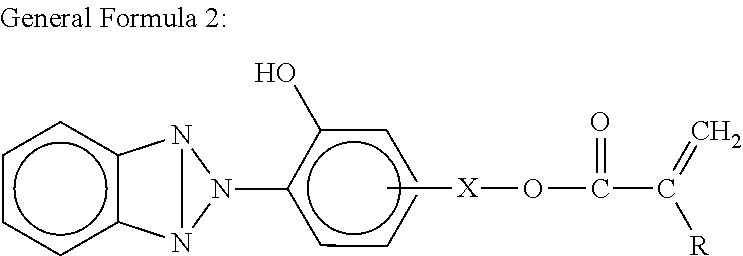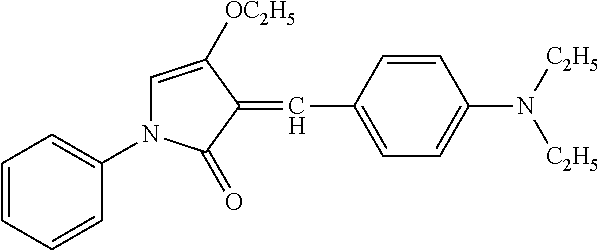Resin composition for protective layer transfer sheets
a technology of protective layer and composition, applied in the direction of transportation and packaging, thermography, instruments, etc., can solve the problems of color fading on prints obtained using dye, and achieve the effects of excellent anti-kickback properties, excellent light fastness, and excellent storage properties
- Summary
- Abstract
- Description
- Claims
- Application Information
AI Technical Summary
Benefits of technology
Problems solved by technology
Method used
Image
Examples
examples
[0075]In the followings, the “%” and “part(s)” indicate “% by weight” and “part(s) by weight”, respectively, unless otherwise specified.
Production Examples 1 to 6, 9, 10 and 14
Production of Polyesters (a) to (f), (i), (j) and (n)
[0076]The monomers as raw material of the polyester as shown in Table 1 and tin (II) dioctylate were charged into a 5 L four-necked flask equipped with a thermometer, a stainless steel stirring rod, a fractionating tube, a falling type condenser and a nitrogen inlet tube. The contents of the flask were reacted in a mantle heater in a nitrogen atmosphere at 215° C. for 5 hours, and further reacted under reduced pressure (20 kPa) until a softening point of the reaction product reached the temperature shown in Table 1 as measured according to ASTM D36-86, thereby obtaining polyesters (a) to (f), (i), (j) and (n).
production examples 7 and 8
Production of Polyesters (g) and (h)
[0077]The monomers as raw material of the polyester except for fumaric acid as shown in Table 1 and tin (II) dioctylate were charged into a 5 L four-necked flask equipped with a thermometer, a stainless steel stirring rod, a falling type condenser and a nitrogen inlet tube. The contents of the flask were reacted in a mantle heater in a nitrogen atmosphere at 235° C. for 8 hours, and further reacted under reduced pressure (8.3 kPa) for 1 hour. Next, fumaric acid and 4-t-butyl catechol were added to the flask at 200° C., and the resulting mixture was reacted for 1 hour, and then further reacted under reduced pressure (20 kPa) until a softening point of the reaction product reached the temperature shown in Table 1 as measured according to ASTM D36-86, thereby obtaining polyesters (g) and (h).
production examples 11 and 12
Production of Polyesters (k) and (l)
[0078]The monomers as raw material of the polyester except for trimellitic anhydride as shown in Table 1 and tin (II) dioctylate were charged into a 5 L four-necked flask equipped with a thermometer, a stainless steel stirring rod, a falling type condenser and a nitrogen inlet tube. The contents of the flask were reacted in a mantle heater in a nitrogen atmosphere at 235° C. for 8 hours, and further reacted under reduced pressure (8.3 kPa) for 1 hour. Next, trimellitic anhydride was added to the flask at 200° C., and the resulting mixture was reacted for 1 hour, and then further reacted under reduced pressure (20 kPa) until a softening point of the reaction product reached the temperature shown in Table 1 as measured according to ASTM D36-86, thereby obtaining polyesters (k) and (l).
PUM
| Property | Measurement | Unit |
|---|---|---|
| molar ratio | aaaaa | aaaaa |
| molar ratio | aaaaa | aaaaa |
| temperature | aaaaa | aaaaa |
Abstract
Description
Claims
Application Information
 Login to View More
Login to View More - R&D
- Intellectual Property
- Life Sciences
- Materials
- Tech Scout
- Unparalleled Data Quality
- Higher Quality Content
- 60% Fewer Hallucinations
Browse by: Latest US Patents, China's latest patents, Technical Efficacy Thesaurus, Application Domain, Technology Topic, Popular Technical Reports.
© 2025 PatSnap. All rights reserved.Legal|Privacy policy|Modern Slavery Act Transparency Statement|Sitemap|About US| Contact US: help@patsnap.com



